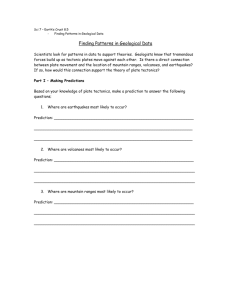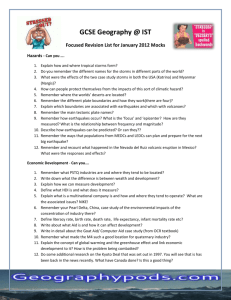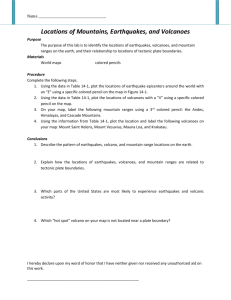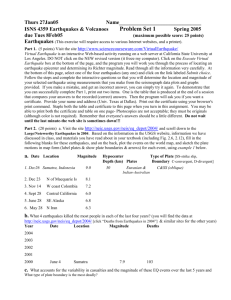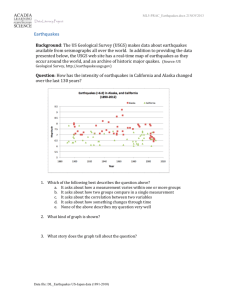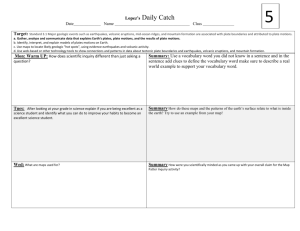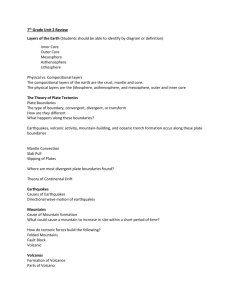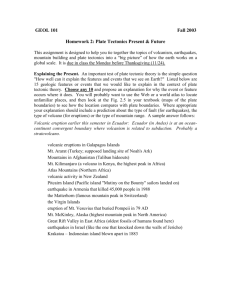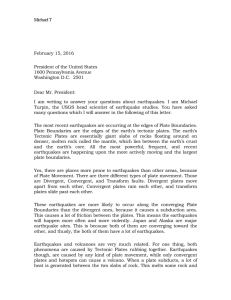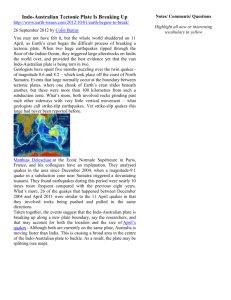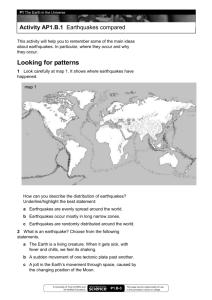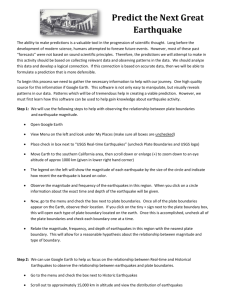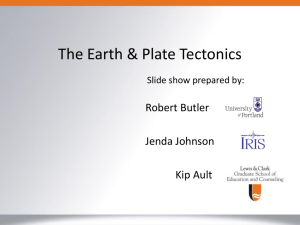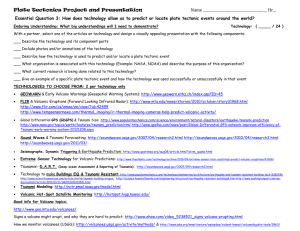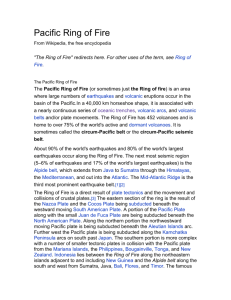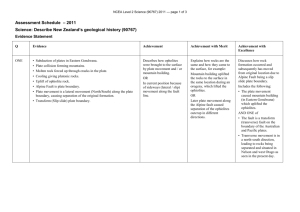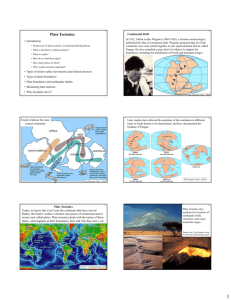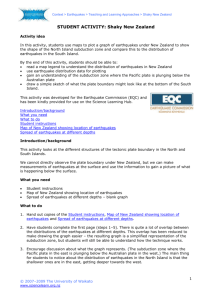Plate Tectonics - Triton Science
advertisement
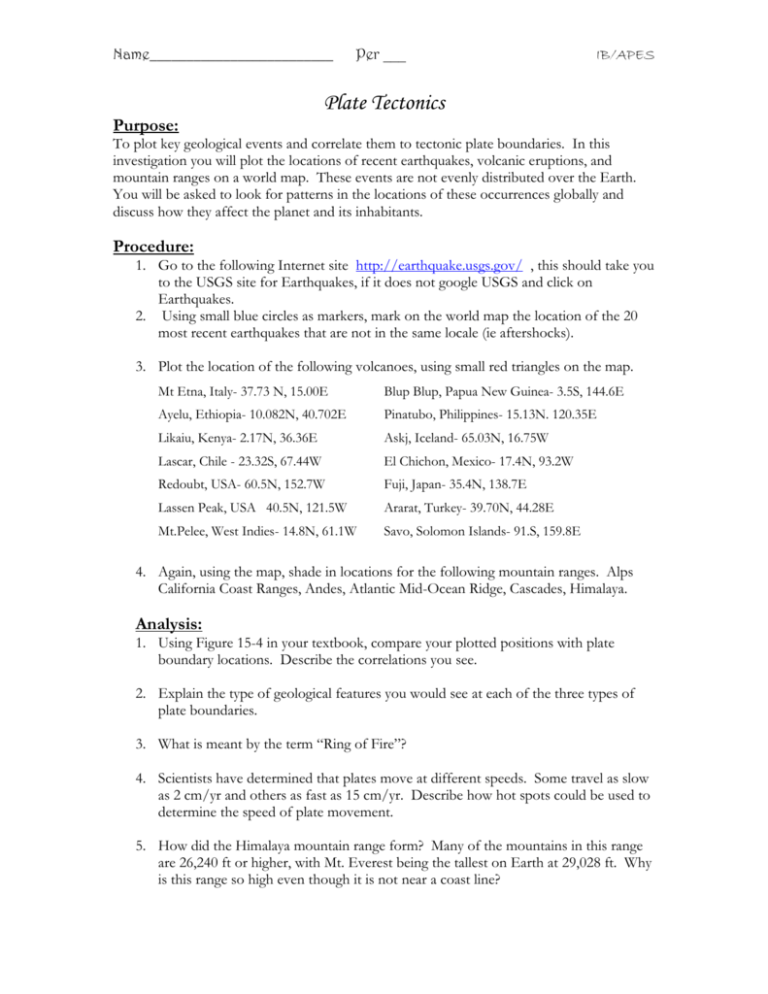
Name_________________________ Per ___ IB/APES Plate Tectonics Purpose: To plot key geological events and correlate them to tectonic plate boundaries. In this investigation you will plot the locations of recent earthquakes, volcanic eruptions, and mountain ranges on a world map. These events are not evenly distributed over the Earth. You will be asked to look for patterns in the locations of these occurrences globally and discuss how they affect the planet and its inhabitants. Procedure: 1. Go to the following Internet site http://earthquake.usgs.gov/ , this should take you to the USGS site for Earthquakes, if it does not google USGS and click on Earthquakes. 2. Using small blue circles as markers, mark on the world map the location of the 20 most recent earthquakes that are not in the same locale (ie aftershocks). 3. Plot the location of the following volcanoes, using small red triangles on the map. Mt Etna, Italy- 37.73 N, 15.00E Blup Blup, Papua New Guinea- 3.5S, 144.6E Ayelu, Ethiopia- 10.082N, 40.702E Pinatubo, Philippines- 15.13N. 120.35E Likaiu, Kenya- 2.17N, 36.36E Askj, Iceland- 65.03N, 16.75W Lascar, Chile - 23.32S, 67.44W El Chichon, Mexico- 17.4N, 93.2W Redoubt, USA- 60.5N, 152.7W Fuji, Japan- 35.4N, 138.7E Lassen Peak, USA 40.5N, 121.5W Ararat, Turkey- 39.70N, 44.28E Mt.Pelee, West Indies- 14.8N, 61.1W Savo, Solomon Islands- 91.S, 159.8E 4. Again, using the map, shade in locations for the following mountain ranges. Alps California Coast Ranges, Andes, Atlantic Mid-Ocean Ridge, Cascades, Himalaya. Analysis: 1. Using Figure 15-4 in your textbook, compare your plotted positions with plate boundary locations. Describe the correlations you see. 2. Explain the type of geological features you would see at each of the three types of plate boundaries. 3. What is meant by the term “Ring of Fire”? 4. Scientists have determined that plates move at different speeds. Some travel as slow as 2 cm/yr and others as fast as 15 cm/yr. Describe how hot spots could be used to determine the speed of plate movement. 5. How did the Himalaya mountain range form? Many of the mountains in this range are 26,240 ft or higher, with Mt. Everest being the tallest on Earth at 29,028 ft. Why is this range so high even though it is not near a coast line?
